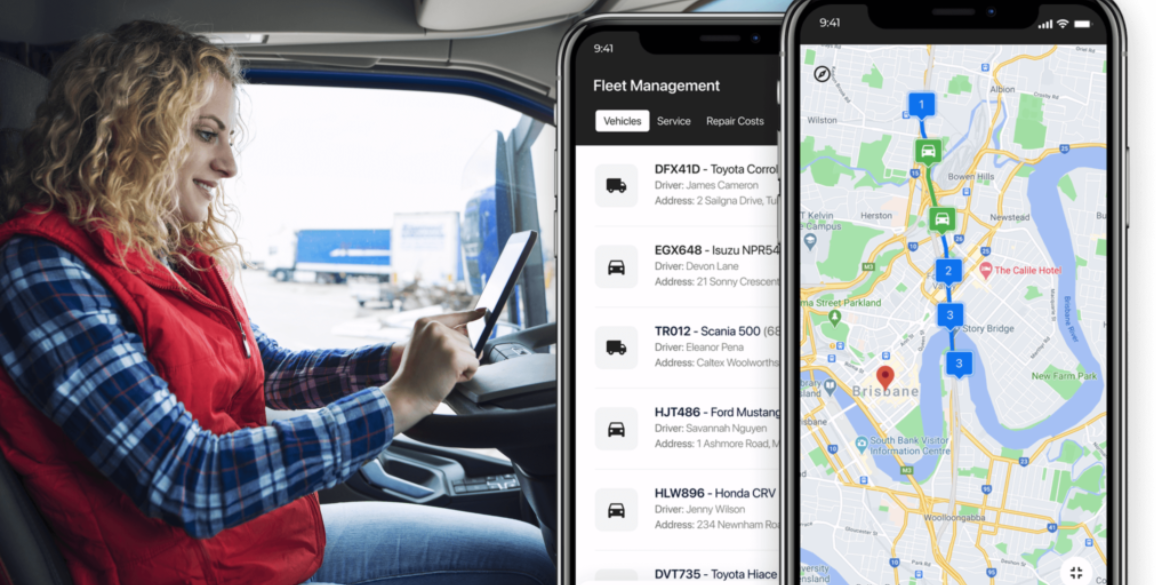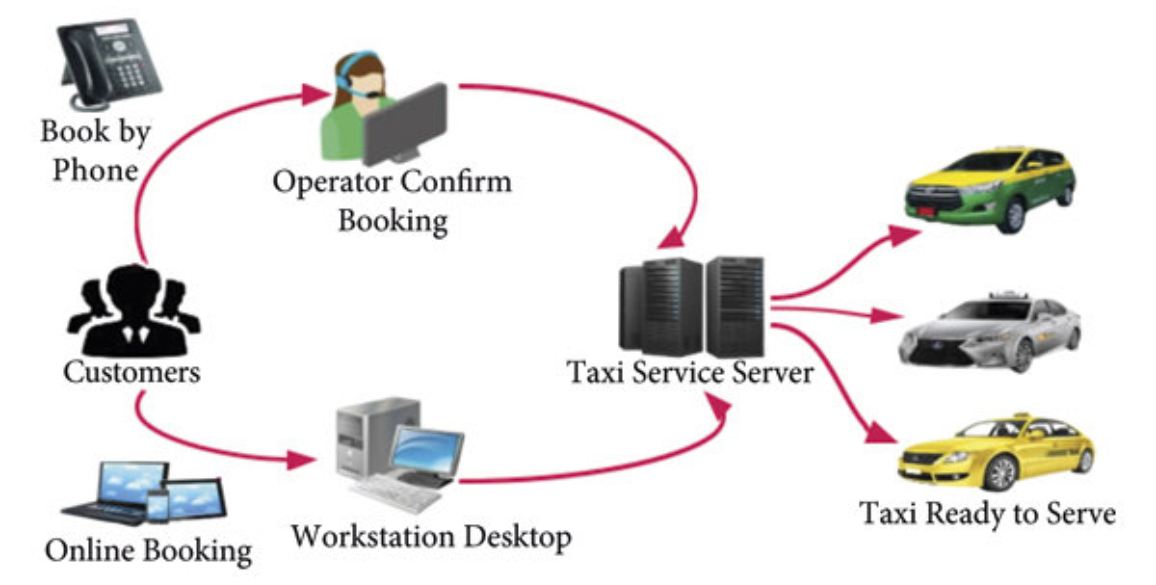How to Start a Taxi Business in India?
Starting in transportation industry can be a game-changer, and launching a taxi business in India opens the door to exciting opportunities and high growth potential. With increasing urbanization and a growing demand for convenient travel, now is an excellent time to explore how to start a taxi business.
This comprehensive guide will walk you through every essential step, from understanding the market to meeting legal requirements, helping you craft a solid taxi cab business plan.
What is a Taxi Business?
A taxi business involves providing transportation services to individuals or groups for a fare. Customers typically hail a cab, book through an app, or call a dispatch service for a ride to their desired destination.

It's about offering convenient, on-demand, or pre-booked mobility solutions.
Types of Taxis:
There are 5 types of taxis:
- Standard Cabs/Sedans: These are the most common type, offering comfortable seating for 3-4 passengers. They are ideal for city commutes and short to medium-distance travel. Examples: Maruti Suzuki Dzire, Hyundai Xcent, Honda Amaze
- SUVs/Larger Vehicles: These cater to larger groups, families with luggage, or those seeking more space and comfort. They are often preferred for airport transfers or outstation trips. Examples: Toyota Innova Crysta, Mahindra XUV500, Maruti Ertiga
- Luxury Cabs: High-end vehicles offering premium services for corporate clients, special events, or customers desiring a more luxurious experience. Examples: Mercedes-Benz E-Class, BMW 5 Series, Audi A6
- Bike Taxis: Gaining popularity in congested cities, these offer quick and affordable rides, primarily for single passengers over short distances. Examples: Bajaj Pulsar (used by Rapido), Honda Activa (used by Ola Bike), TVS Apache (used by Uber Moto)
- Auto-Rickshaws (E-Rickshaws/Traditional): While not traditional "taxis," they form a significant part of India's last-mile connectivity and are often managed by similar aggregators or independent operators.
Opportunities in the Taxi Industry
Factors like rapid urbanization, a rising middle class, increasing tourism, and growing digital literacy have fueled the demand for reliable and affordable transportation. Even with the presence of large aggregators like Uber and Ola, there's ample room for new players.
Opportunities exist in:
- Tier 2 and Tier 3 Cities: These markets are often underserved by major players, offering a chance to establish a strong local presence.
- Niche Services: Specializing in airport transfers, corporate employee transport, tourist packages, or inter-city routes can carve out a unique space.
- Luxury Segment: A demand for premium, comfortable, and reliable services for high-end clients remains.
- Technology Integration: Leveraging modern technology to improve efficiency, customer experience, and driver management.
- Environmentally Friendly Options: The future holds potential for electric vehicle fleets, catering to eco-conscious consumers.
- Government Push for EV Adoption: The Indian government is actively promoting electric mobility through incentives, tax benefits, and subsidies. Under schemes like FAME II, encouraging taxi operators to shift to EVs for long-term cost and environmental benefits.
Get Your Company Registered Today
Free consultations for MCA approvals to help you get started with your business.
Choosing Your Taxi Business Model in India
Deciding on your business model is a critical first step when you're considering how to set up a taxi business.
| Aspect | Attaching Your Car to an Aggregator (e.g., Uber, Ola) | Starting Your Own Independent Taxi Service/Fleet |
| Best For | Those exploring how to start a taxi business with one car | Entrepreneurs wanting full control and brand building |
| How It Works | Register your commercial vehicle with an aggregator platform and operate through their app | Establish a taxi cab business plan, manage your bookings, drivers, and operations |
| Startup Complexity | Low-Aggregator provides a platform, an app, and a customer base | High – You need a full taxi service business plan, setup, marketing, and systems |
| Investment | Minimum – Just your car, license, and aggregator onboarding fee. The investment would start from around Rs. 3 to Rs. 5 lakhs | High – Vehicles, driver salaries, app/website, admin, and marketing costs |
| Revenue Model | The aggregator takes a commission per ride. Up to 20% commission per ride | You keep 100% of ride fares |
| Profit Margin | Lower due to commissions and incentives | Potentially higher as you retain full earnings |
| Operational Control | Limited – You follow aggregator policies and pricing | Full – You control pricing, service quality, and policies |
| Customer Acquisition | Done by an aggregator, you get ride requests via their app | You must invest in marketing and build a loyal customer base |
| Brand Building | None – You operate under the aggregator’s brand | Full opportunity to develop unique taxi business names and identity |
| Flexibility | High – Work on your own time | Depends on business size – less flexible as you grow |
| Competition | High – Many drivers on the same platform | Compete with aggregators and other local operators |
| Technology Needed | Provided by an aggregator (app, GPS, payment system) | You must build or subscribe to dispatch, tracking, and booking systems |
Step-by-Step Guide to Start a Taxi Business
Here's a comprehensive guide on how to start a taxi cab business:
Step 1: Conduct Thorough Market Research and Develop a Robust Business Plan
- Identify Demand: Research the need for taxi services in your target area. Analyze existing competitor pricing, service quality, and identify any underserved niches.
- Define Your Niche: Decide on the specific type of taxi service you'll offer (e.g., local commutes, outstation trips, luxury travel, corporate transport, or a combination).
- Create Your Taxi Business Plan: Develop a comprehensive document outlining:
- Your business's mission and vision.
- The specific services you will offer.
- Your target customer segments.
- A detailed marketing and sales strategy.
- An operational plan (how daily activities will run).
- Financial projections (startup costs, revenue forecasts, break-even analysis, profit & loss projections).
- Your management team and organizational structure.
- This taxi cab business plan is crucial for securing funding and guiding your entire venture, whether you're learning how to start a taxi business with one car or a fleet.
Step 2: Procure and Manage Vehicles
- Vehicle Selection: Choose vehicles known for fuel efficiency, reliability, comfort, and low maintenance costs suitable for commercial use. Consider whether you need sedans, SUVs, or even an option for how to start a taxi business with one car initially.
- Purchase/Lease: Acquire your vehicles, whether new or used. If buying, finalize financing options.
- Regular Maintenance: Follow a strict maintenance schedule to ensure safety, reduce breakdowns, and extend vehicle life. Also, consider local traffic patterns and pollution norms, especially diesel bans in cities like Delhi NCR, to stay compliant and efficient.
- Branding: If starting your independent service, brand your vehicles with your chosen taxi business name and logo.
Step 3: Hire and Train Drivers (if applicable)
- Recruitment: Hire drivers with valid commercial driving licenses, clean records, and strong local knowledge and customer service skills. As per the Motor Vehicles Act, ensure they also hold a driver badge issued by the RTO. Conduct thorough background checks and police verification for safety and compliance.
- Training: Train drivers on routes, using technology, customer etiquette, safety protocols, and emergency procedures. Ensure they understand your taxi service business plan and customer expectations.
Step 4: Marketing, Pricing, and Launch Your Business
- Marketing Strategy: Develop and execute a marketing plan. This could include local advertising, digital marketing, partnerships with hotels or businesses, and promotional offers. Build a strong brand around your chosen taxi business names via website and mobile app.
- Set Pricing: Determine competitive and profitable fare structures, considering per-kilometer rates, waiting charges, and surge pricing strategies.
- Launch: Officially launch your taxi business. Focus on delivering excellent customer service from day one to build a strong reputation and foster customer loyalty. Continuously gather customer feedback to improve services.
Get Your Company Registered Today
Free consultations for MCA approvals to help you get started with your business.
Legal & Licensing Requirements for a Taxi Business in India
Compliance with legal and licensing requirements is non-negotiable for setting up a taxi business legally in India.
| Document / License | Purpose | Details | Issuing Authority |
| Commercial Driving License (Yellow Badge) | To legally drive commercial passenger vehicles | Must be at least 18–20 years old (depending on state/rules), pass the 8th standard, and hold a valid LMV license for at least 1 year | Regional Transport Office (RTO) |
| Commercial Vehicle Registration Certificate (RC) | To identify your vehicle as commercial | Register the vehicle as a commercial one with yellow license plates | RTO |
| Fitness Certificate | To ensure roadworthiness | Mandatory for all commercial vehicles; needs periodic renewal | RTO |
| Permit (Taxi/Transport Permit) | Legal authorization to operate as a taxi | Options include: Stage Carriage Permit, Contract Carriage Permit, or All India Tourist Permit (AITP) | RTO / State Transport Authority |
| Commercial Vehicle Insurance | To meet legal insurance requirements | At least Third-Party Liability Insurance is mandatory. A comprehensive policy is strongly advised | Any IRDAI-registered insurance company |
| Pollution Under Control (PUC) Certificate | To certify compliance with pollution norms | Required for all vehicles and must be renewed periodically | Authorized PUC Centers |
| GST Registration | For indirect tax compliance (if applicable) | Mandatory if turnover exceeds Rs. 20 lakh (Rs. 10 lakh in special category states). Exemptions apply for meter-based taxis | Goods and Services Tax Portal (GSTN) |
| PAN Card | Income tax and financial transactions | PAN of the business entity is required (or personal PAN for proprietors) | Income Tax Department |
| Business Registration | To establish the legal identity of your business | Register as a Sole Proprietor , Partnership Firm , LLP , or Private Limited Company | Ministry of Corporate Affairs / Local Registrar |
| Local Municipal Licenses | To comply with local transport and trade norms | Varies by city or municipality; may include Trade License or Municipal NOC | Local Municipal Corporation or Authority |
| Police Verification | For driver background checks and safety | Often mandatory for commercial drivers for security and passenger safety | Local Police Department or via an aggregator platform |
Technology for Modern Taxi Service Business Plan
Technology is no longer an option but a necessity for any modern taxi service business plan.
1. GPS Tracking
Install GPS tracking devices in all your vehicles.

Benefits:
- Real-time tracking of vehicle location, speed, and route. Improves safety for drivers and passengers, optimizes routes, monitors driver behavior, and aids in quick response during emergencies.
- Many commercial vehicle insurance providers offer add-ons or discounts for vehicles equipped with GPS trackers.
2. Taxi Booking App
If you're starting an independent fleet, a dedicated taxi booking app can be a game-changer.
- Features: User registration, ride booking (now or schedule for later), real-time driver tracking, in-app payments, fare estimation, ride history, and feedback options.
- Cost: Developing a basic taxi booking app in India can range from Rs. 3 lakhs to Rs. 10 lakhs or more, depending on features, platform (Android/iOS), and complexity. Ready-made solutions can be more cost-effective.
3. Dispatch System
A robust dispatch system is crucial for managing your fleet and optimizing bookings.

- Features: Automated ride assignment to nearest available drivers, real-time tracking of driver status, managing pre-bookings, handling cancellations, and generating performance reports.
- Benefits: Reduces manual intervention, improves response times, and increases operational efficiency.
- Cost: Basic dispatch systems can start from Rs. 10,000 to Rs. 50,000 for a one-time setup or subscription, while advanced, customized solutions can go much higher.
Get Your Company Registered Today
Free consultations for MCA approvals to help you get started with your business.
How Much Does it Cost to Start a Taxi Business?
The initial investment for how to start a taxi business can vary significantly based on your chosen business model and scale.
| Cost Component | Estimated Cost (Rs. ) | Description |
| Commercial Vehicle Purchase | Rs. 6,00,000 – Rs. 12,00,000 | Cost of a new or used sedan/SUV with commercial registration. EMI options are available. |
| Vehicle Registration & RTO Fees | Rs. 10,000 – Rs. 20,000 | Includes commercial registration, fitness certificate, and road tax. |
| Vehicle Insurance (Commercial) | Rs. 15,000 – Rs. 30,000/year | Mandatory third-party or comprehensive insurance for taxi use. |
| All India Tourist Permit | Rs. 15,000 – Rs. 20,000 | Required for interstate operation (for some states). |
| Branding & Paint (if independent) | Rs. 5,000 – Rs. 10,000 | For decals, stickers, logos, and basic branding of your taxi. |
| Mobile & GPS Setup | Rs. 2,000 – Rs. 5,000 | A GPS tracker and smartphone for the driver. |
| Taxi App/Software Subscription (optional) | Rs. 1,000 – Rs. 5,000/month | If using third-party taxi dispatch platforms. |
| Aggregator Onboarding Fee (Uber/Ola) | Rs. 500 – Rs. 1,000 | Varies by aggregator (if you’re not going independent). |
| Driver Salary or Commission | Rs. 12,000 – Rs. 18,000/month | If you're not driving yourself. Could be salary or per-trip commission. |
| Fuel & Maintenance (Monthly) | Rs. 8,000 – Rs. 15,000 | Fuel, regular servicing, tires, oil change, etc. |
| Legal & Consultancy (optional) | Rs. 5,000 – Rs. 10,000 | For help with licenses, business setup, GST , etc. |
| Total Initial Investment (One Car) | Rs. 6.5 Lakh – Rs. 13 Lakh | Approximate cost to start a taxi business with one car. |
Note: This estimate covers essential startup and operational costs for launching a taxi service with a single vehicle. Contact a professional to get actual expenses, which may vary based on location, vehicle type, and business model
Challenges When Running a Taxi Business
Some challenges when running a taxi business are:
- Driver Management and Availability:
Recruiting reliable drivers and ensuring they are available during peak demand hours can be difficult. High driver turnover and absenteeism impact service consistency. - Vehicle Maintenance and Operational Costs:
Taxis require regular servicing, and unexpected breakdowns can disrupt operations. Rising fuel prices and maintenance costs also strain profit margins. - Customer Acquisition and Retention:
Competing with ride-hailing platforms (like Ola, Uber) makes it hard for standalone taxi businesses to attract and retain customers consistently. - Licensing and Regulatory Compliance:
Obtaining permits, maintaining vehicle fitness certificates, and adhering to local transportation regulations can be time-consuming and complex. - Booking and Dispatch Inefficiencies:
Manual booking systems or outdated dispatch methods can lead to missed bookings, delays, and customer dissatisfaction.
Solutions for Smooth Taxi Business Operations
Solutions pertaining to the challenges are as follows:
- Structured Driver Onboarding and Scheduling:
Implement a clear hiring process with background checks, orientation, and defined shift schedules. Utilize driver incentives and flexible scheduling to enhance retention and improve availability during peak hours. - Preventive Maintenance and Expense Tracking:
Schedule regular vehicle checks and maintain a service log to prevent sudden breakdowns. Use fuel and maintenance tracking apps to monitor and control operational expenses. - Build a Local Customer Base and Offer Loyalty Rewards:
Focus on partnerships with hotels, offices, and schools for steady demand. Introduce loyalty programs and offer personalized service to encourage repeat business, thereby outpacing app-based competitors. - Hire a Consultant or Use Licensing Agencies:
To stay compliant, consult with transportation experts or use agencies that handle paperwork, renewals, and inspections. Set reminders for renewal dates and document submissions. - Invest in Booking and Dispatch Software:
Adopt taxi dispatch software or apps that allow for real-time booking, tracking, and automated notifications. This improves efficiency, reduces errors, and enhances the customer experience.
Get Your Company Registered Today
Free consultations for MCA approvals to help you get started with your business.
Frequently Asked Questions (FAQs)
What is the difference between attaching to an aggregator and starting an independent taxi service?
−Attaching to an aggregator means you use their platform and customer base, giving up a percentage of earnings as commission. Starting an independent service means you manage everything yourself, build your brand, and retain full earnings, but it requires more effort in customer acquisition and operations, especially when you how to start a taxi business with one car.
Can I start a taxi business with one car?
+What are some good taxi business names?
+How important is a taxi cab business plan?
+Do I need a special license to drive a taxi myself?
+What kind of insurance is mandatory for a taxi in India?
+How do I find good drivers for my taxi business?
+Is having a taxi booking app essential for a small independent taxi business?
+What is the typical commission charged by aggregators like Uber/Ola?
+What if my car breaks down frequently?
+Can I get a loan to buy a taxi
+What is a "fitness certificate" for a taxi?
+How can I make my taxi business stand out?
+What is the average cost to develop a basic taxi service business plan app in India?
+Is GST applicable on taxi fares in India?
+How long does it take to get all the necessary licenses and permits?
+Should I hire drivers on salary or commission?
+

